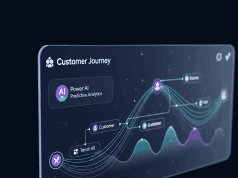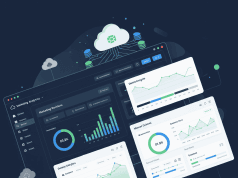In today’s data-driven marketplace, businesses are continuously seeking ways to enhance customer relationships, personalize experiences, and ultimately increase revenue. Enter Customer Data Platforms (CDPs)—powerful tools designed to unify and leverage customer data. However, achieving a substantial return on investment (ROI) from CDPs requires strategic implementation and ongoing management. This article explores key lessons learned from real-world CDP implementations that can help organizations maximize their ROI.
Understanding CDPs
A Customer Data Platform is a centralized system that collects, integrates, and manages customer data from multiple sources. By creating a comprehensive, 360-degree view of customers, CDPs empower organizations to make data-informed decisions, tailor marketing strategies, and enhance customer experiences.
Benefits of CDPs
- Data Unification: CDPs consolidate data from various channels, including CRM systems, email marketing platforms, social media, and website analytics.
- Enhanced Personalization: By leveraging unified data, businesses can create highly targeted marketing campaigns and personalized customer engagement strategies.
- Improved Analytics: CDPs facilitate advanced analytics, enabling deeper insights into customer behavior and preferences.
- Streamlined Operations: Automating data management reduces the time and resources needed for manual processes.
Key Lessons Learned from Real-World Implementations
1. Start with Clear Objectives
One of the foremost lessons is the importance of defining clear objectives before implementation. Organizations should ask:
- What specific problems are we trying to solve?
- What metrics will define success?
For instance, a retail brand might aim to increase customer retention by 20% within a year. By setting clear goals, businesses can tailor their CDP strategies accordingly, ensuring that every decision directly supports their objectives.
2. Invest in Data Quality
Data quality is crucial for CDP success. Poor-quality data can lead to inaccurate insights and ineffective marketing strategies. Companies that invest in robust data governance frameworks and regular data cleaning processes tend to see significantly better outcomes. This includes:
- Standardizing Data Formats: Ensuring consistency across data sources.
- Regular Audits: Conducting frequent audits to identify and rectify data discrepancies.
3. Focus on Integration
Integrating diverse data sources is vital to unlocking the full potential of CDPs. Organizations should prioritize seamless integration with:
- Existing Systems: Align the CDP with existing CRM, ERP, and marketing automation platforms.
- Third-Party Data Providers: Enhance profiles with additional insights from outside sources.
Successful implementations demonstrate that a well-integrated CDP can provide holistic customer insights, enabling more informed decision-making.
4. Embrace a Customer-Centric Culture
Adopting a customer-centric approach is essential for leveraging CDP capabilities effectively. This involves training employees across departments to understand the importance of customer data and how to utilize it for better service. By fostering a culture of customer-centricity, organizations can:
- Increase collaboration between teams (e.g., marketing, sales, and customer service).
- Improve customer interactions through personalized experiences.
5. Monitor and Measure Success Continuously
To maximize ROI, businesses should establish continuous monitoring and reporting mechanisms. Real-world implementations showcase that companies often implement dashboards to track key performance indicators (KPIs), such as:
- Customer lifetime value (CLV)
- Customer acquisition costs (CAC)
- Engagement rates
These insights enable organizations to adjust strategies in real-time, optimizing marketing efforts and ensuring alignment with changing customer expectations.
6. Scale Gradually
Businesses should consider implementing CDPs in stages, allowing for gradual scaling. This approach minimizes risks and helps organizations learn from initial deployments before expanding capabilities. By piloting projects in specific departments or regions, organizations can identify what works best and refine strategies accordingly.
7. Leverage Advanced Analytics and AI
Utilizing advanced analytics and AI features within CDPs can greatly enhance ROI. Machine learning algorithms can help predict customer behavior and generate actionable insights. Companies that embrace these technologies often find themselves ahead of the curve in strategic planning, enabling proactive marketing initiatives rather than reactive measures.
Conclusion
Maximizing ROI with Customer Data Platforms requires careful planning, execution, and ongoing management. By embracing the lessons learned from real-world implementations—defining objectives, ensuring data quality, integrating effectively, fostering a customer-centric culture, monitoring progress, scaling gradually, and leveraging advanced analytics—organizations can unlock the full potential of CDPs. In a landscape where customer expectations are ever-evolving, these practices not only enhance customer experiences but also drive significant business growth.









